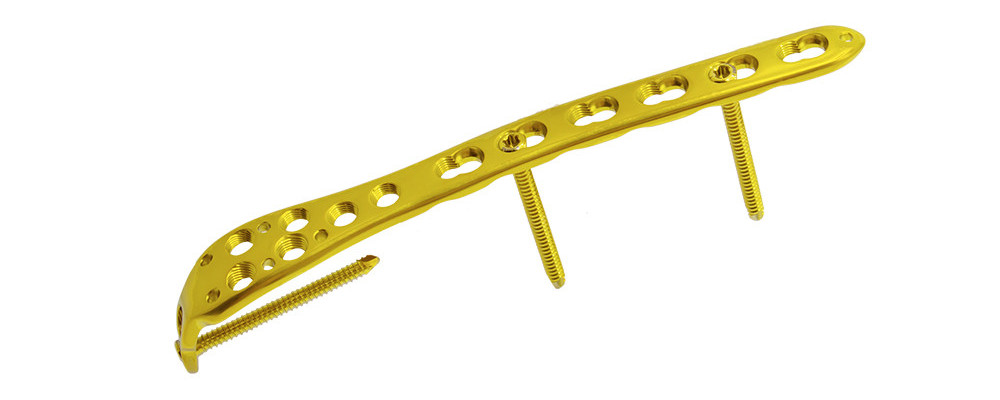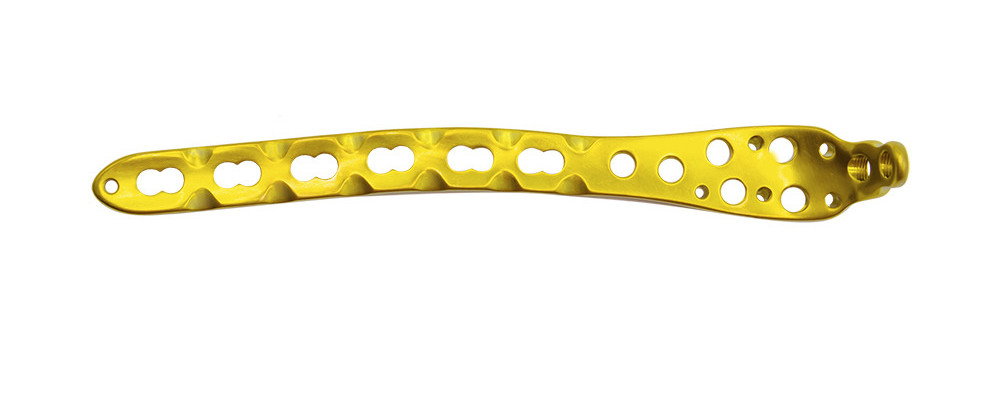
The elbow joint is essential for the normal functioning of the arm, allowing for a wide range of movements. However, injuries to the olecranon, the bony prominence at the back of the elbow, can significantly affect elbow stability and mobility. In cases where the olecranon fracture is severe or displaced, surgical intervention may be necessary to promote proper healing. One effective solution that orthopedic surgeons employ is the olecranon locking plate, a specialized device designed to restore elbow stability and function. In this article, we will explore the benefits, procedure, and recovery associated with the olecranon locking plate.
Introduction
The olecranon plays a vital role in the stability and functioning of the elbow joint. Fractures to this region can occur due to various factors, such as falls, sports injuries, or accidents. When the fracture is severe or displaced, the use of an olecranon locking plate is an effective solution to promote proper healing and restore elbow stability.
Understanding Olecranon Fractures
Olecranon fractures typically result from a direct impact or a fall on the outstretched hand. The symptoms may include pain, swelling, tenderness, visible deformity, and limited range of motion in the elbow.
Causes and Symptoms
Olecranon fractures can occur due to a variety of reasons, including sports injuries, traumatic accidents, or direct blows to the elbow. Symptoms may include immediate pain, swelling, bruising, and difficulty in moving the arm.
Classification of Olecranon Fractures
Olecranon fractures are classified based on their severity and displacement. They can range from simple fractures with minimal displacement to comminuted fractures where the bone is broken into multiple fragments. The classification helps the orthopedic surgeon determine the most appropriate treatment approach.

The Role of Olecranon Locking Plates
Olecranon locking plates are specialized orthopedic devices designed to stabilize and support the fractured olecranon during the healing process. These plates are typically made of high-quality materials like titanium or stainless steel, providing strength and stability. The locking mechanism of these plates offers superior fixation compared to non-locking plates.
Overview of Olecranon Locking Plates
Olecranon locking plates consist of a metal plate with multiple screw holes and locking screws. The plate is contoured to match the shape of the olecranon and is positioned on the fractured bone. The locking screws are inserted through the plate into the bone, securing the fragments in place. This construct provides enhanced stability and compression, facilitating optimal healing.
Advantages of Locking Plates
Olecranon locking plates offer several advantages over traditional treatment options. Firstly, they provide improved stability, reducing the risk of non-union (failure of bone healing) or malunion (improper bone healing). Secondly, locking plates allow for early mobilization and range of motion exercises, promoting faster recovery and rehabilitation. Additionally, these plates accommodate various fracture patterns, making them versatile in addressing different olecranon fractures.
How Locking Plates Enhance Stability
The locking screws used in olecranon locking plates create a fixed-angle construct, preventing excessive movement at the fracture site. This stability is especially beneficial for fractures with significant displacement or comminution. By maintaining the alignment and position of the fractured bone fragments, locking plates aid in the healing process and reduce the risk of complications.

Surgical Procedure
When an olecranon fracture requires surgical intervention, the orthopedic surgeon will perform the following steps:
Preoperative Evaluation
Before the surgery, a thorough evaluation is conducted, including a physical examination, X-rays, and possibly additional imaging tests. This evaluation helps assess the severity of the fracture and plan the surgical approach.
Anesthesia and Incision
The surgery is typically performed under general anesthesia. Once the patient is sedated, the surgeon makes an incision over the fractured olecranon to access the bone fragments.
Plate Placement and Fixation
Using specialized instruments, the surgeon aligns the fractured bone fragments and positions the olecranon locking plate over the bone. The plate is then secured to the olecranon using locking screws. The number and placement of screws depend on the fracture pattern and the surgeon's judgment.
Closure and Postoperative Care
After confirming proper fixation, the incision is closed with sutures or staples, and a sterile dressing is applied. The patient is closely monitored during the initial recovery phase, and postoperative care instructions are provided.
Recovery and Rehabilitation
Following surgery with an olecranon locking plate, the recovery process involves several stages:
Initial Healing Phase
During the initial healing phase, which typically lasts for several weeks, the bone gradually starts to heal. The patient may experience discomfort, swelling, and limited range of motion during this period. Pain medications and cold therapy may be used to manage these symptoms.
Physical Therapy and Exercises
As the bone continues to heal, the orthopedic surgeon may recommend physical therapy and exercises to improve range of motion, strength, and function. These exercises are tailored to the individual's specific needs and may involve gentle elbow movements, stretching, and strengthening exercises.
Returning to Normal Activities
The time it takes to return to normal activities varies depending on the individual and the severity of the fracture. Most patients can resume light activities within a few months, while more physically demanding activities may require a longer recovery period. The surgeon will provide guidance on when it is safe to resume specific activities.
Potential Complications and Risks
While olecranon locking plates are generally considered safe and effective, like any surgical procedure, there are potential risks and complications to be aware of. Some possible complications include:
Infection and Wound Healing Issues
Infections can occur at the surgical site, although they are relatively rare. Proper wound care, including keeping the incision clean and dry, can help minimize the risk of infection. In some cases, delayed wound healing or skin irritation may also occur.
Hardware-Related Problems
Occasionally, hardware-related issues may arise, such as plate or screw loosening, breakage, or irritation. These complications can usually be addressed through a surgical procedure if necessary.
Frequently Asked Questions (FAQs)
Q: How long does it take for an olecranon fracture to heal with a locking plate?
A: The healing time varies depending on the severity of the fracture and individual factors. Generally, it takes around 6 to 8 weeks for the bone to heal, but complete recovery and return to normal activities may take several months.
Q: Can the olecranon locking plate be removed after the bone has healed?
A: In most cases, the olecranon locking plate does not need to be removed unless it causes significant discomfort or complications. The decision to remove the plate is made on an individual basis, considering the patient's specific circumstances.
Q: Are there any restrictions or precautions after olecranon fracture surgery with a locking plate?
Q: Can olecranon fractures heal without surgery?
A: Simple olecranon fractures with minimal displacement may heal without surgery, depending on the individual and the fracture characteristics. However, for more severe or displaced fractures, surgical intervention may be necessary for optimal healing and restoration of elbow function.
Q: Is physical therapy necessary after olecranon fracture surgery with a locking plate?
A: Physical therapy is often recommended to aid in the recovery process, restore range of motion, and regain strength. The specific duration and intensity of physical therapy will depend on the individual's condition and progress.
Conclusion
The use of an olecranon locking plate is a valuable surgical technique in the treatment of olecranon fractures. These specialized plates offer enhanced stability, allowing for optimal healing and restoration of elbow function. If you have experienced an olecranon fracture, consult with a qualified healthcare professional to determine the most suitable treatment approach.
English
Français
Русский
Español
العربية
Português
Deutsch
italiano
日本語
한국어
Nederlands
Tiếng Việt
ไทย
Polski
Türkçe
አማርኛ
ພາສາລາວ
ភាសាខ្មែរ
Bahasa Melayu
ဗမာစာ
தமிழ்
Filipino
Bahasa Indonesia
magyar
Română
Čeština
Монгол
қазақ
Српски
हिन्दी
فارسی
Kiswahili
Slovenčina
Slovenščina
Norsk
Svenska
українська
Ελληνικά
Suomi
Հայերեն
עברית
Latine
Dansk
اردو
Shqip
বাংলা
Hrvatski
Afrikaans
Gaeilge
Eesti keel
Māori
नेपाली
Oʻzbekcha
latviešu
অসমীয়া
Aymara
Azərbaycan dili
Bamanankan
Euskara
Беларуская мова
भोजपुरी
Bosanski
Български
Català
Cebuano
Corsu
ދިވެހި
डोग्रिड ने दी
Esperanto
Eʋegbe
Frysk
Galego
ქართული
guarani
ગુજરાતી
Kreyòl ayisyen
Hausa
ʻŌlelo Hawaiʻi
Hmoob
íslenska
Igbo
Ilocano
Basa Jawa
ಕನ್ನಡ
Kinyarwanda
गोंगेन हें नांव
Krio we dɛn kɔl Krio
Kurdî
Kurdî
Кыргызча
Lingala
Lietuvių
Oluganda
Lëtzebuergesch
Македонски
मैथिली
Malagasy
മലയാളം
Malti
मराठी
ꯃꯦꯇꯥꯏ (ꯃꯅꯤꯄꯨꯔꯤ) ꯴.
Mizo tawng
Chichewa
ଓଡ଼ିଆ
Afaan Oromoo
پښتو
ਪੰਜਾਬੀ
Runasimi
Gagana Samoa
संस्कृत
Gaelo Albannach
Sepeti
Sesotho
chiShona
سنڌي
Soomaali
Basa Sunda
Wikang Tagalog
Тоҷикӣ
Татарча
తెలుగు
ትግንያውያን
Xitsonga
Türkmençe
संस्कृत
ئۇيغۇرچە
Cymraeg
isiXhosa
ייִדיש
Yorùbá
isiZulu













